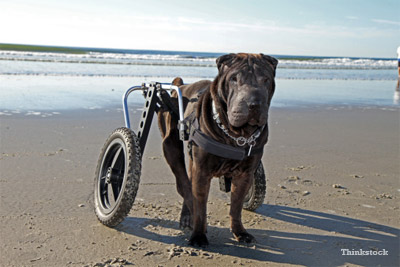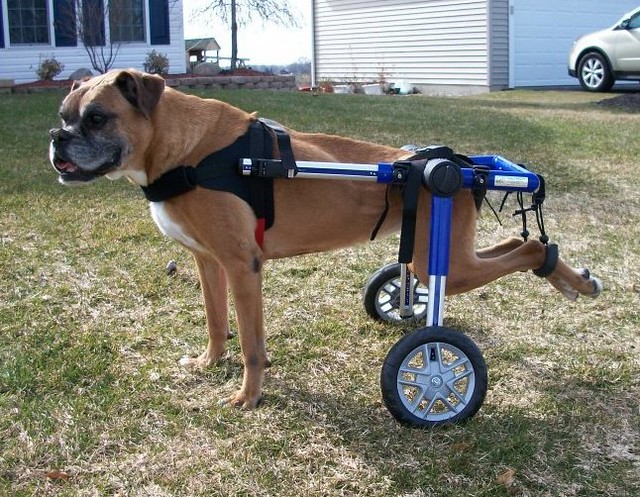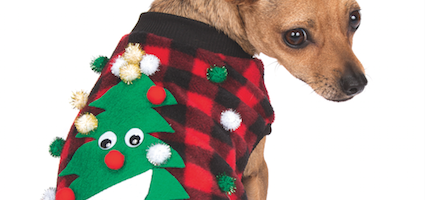Coyotes, just as other wildlife, are facing shrinking habitat everywhere these days. Increasingly, we see stories in the news about coyotes even coming into urban areas during daytime hours. It’s also been noted that coyotes seem to be feeling more comfortable around humans, losing their natural fear of people in the process. This is happening all across the country.
Connect with a verified veterinarian in minutes. Licensed vets are available 24/7 to answer your questions. No need to worry about your furry family member.
Another issue that brings coyotes into areas with humans (suburbs and cities) is the lack of food. Coyotes are scavengers and will eat almost anything when starving. Their natural diet includes small rodents (mice, rats, rabbits), snakes, frogs and larger prey such as deer, cattle, fruit and more. However, they will try to catch pets when other food is unavailable, including cats and small dogs.
With the increase in coyote sightings, it’s necessary to take preventive measures to keep your dog safe at all times—even in your own backyard. Coyotes are not shy when it comes to scavenging—even near your home. So, it pays to take some precautions to keep you and your dog safe.
What Other Threats Do Coyotes Pose?
Not only can coyotes become a nuisance and danger to your dog and other pets, but they also pose additional threats to you, your family and pets. Coyotes on rare occasions have been known to attack humans, though these are usually rabid animals.
Coyotes can also carry contagious diseases such as rabies, tick-borne diseases (including Lyme disease and ehrlichiosis), canine distemper, etc. These are additional reasons to protect your dog and home against coyotes.
Tips to Keep Your Dog and Family Safe from Coyotes
1. Avoid feeding coyotes or other wildlife: don’t feed coyotes or other wildlife, as this will draw unwanted attention from coyotes that could hurt your dog. Coyotes may be drawn to your yard for scraps, but could also look at the area around your home as a grocery store, where they can easily grab other wildlife, such as rodents (mice, rabbits, rats), fish, frogs, or even deer. And don’t forget to pick up your dog’s poop from the yard, as this is also an attractant for coyotes.
2. Clean up your yard: coyotes are scavengers that eat anything, and are drawn by trash and other things left in your yard and around your home. Coyotes are omnivores and will eat grass, fruit, garbage of any type, insects, etc. Be sure to keep your yard clean, the grass mowed, and shrubs trimmed to make it more uninviting for these canine carnivores. Also, be sure to bring in any pet food and water bowls when your fur baby’s done eating. Better yet, avoid feeding your pets outside completely.
Trash is a huge draw for coyotes, so be sure to keep your garbage in animal-proof containers. Keep garbage containers in a shed or in the garage to keep them more inaccessible to coyotes and other animals. Composting can also be an attractant for coyotes, so avoid putting bones, meat, etc. into your compost pile. If you cook outdoors on a grill, be sure to clean the grill and bring it inside once it’s cooled down and cleaned. The smell of cooked foods on the grill can be a draw for coyotes.
One more note—coyotes are also drawn by bird feeders. In fact, it’s better to not feed your dog or other pets outside. Not only could the coyote hunt the birds in your yard, but they will eat any spilled bird food that falls to the ground.
3. Avoid off-leash walks or retractable leashes in high-risk areas: when walking in high-risk areas, it’s a good idea to stay on the trail and keep your pup on a tight leash. Keeping your dog near you protects him from a coyote attack, as most coyotes are wary and afraid of humans. Keeping your dog on the leash and keeping it tight at all times will save your pup’s life.
4. Avoid walking your dog during twilight or nighttime hours: coyotes are nocturnal and become active in the twilight hours. Walk your dog earlier in the day, when there’s more light to keep coyotes at bay. Try to avoid walking your dog at night as much as possible.
5. Never leave your dog (or other pets) unattended: don’t leave your fur baby unattended anywhere, even in your own backyard. Be sure that all pet doors are secure, too, as a coyote could even try to enter your house. If your dog can fit through the pet door, chances are a coyote could also make it through.
6. Build a fence: coyotes can easily climb most types of fences you may build to keep them out. For this reason, you may need to consider installing an anti-coyote fence that’s specifically made to keep these wild canines out of your yard. An anti-coyote fence should be at least 6 feet tall or higher, and even better should be built on ground that slopes away from the fence. Don’t forget that coyotes are also expert diggers—you should include an “apron” at the bottom of the fence, that goes 4 to 6 inches into the dirt and includes stays to keep the fencing from coming up.
You might also consider adding coyote fence spikes to the top of the fencing you choose. Fence spikes keep climbing animals (and even birds) with sharp spikes that can be uncomfortable to the animal. Keep in mind that some spikes can cause damage to the animal. If you only want to keep them out of the yard, but not hurt the animals, then consider TheOutDoorShop Cat Repeller Fence and Wall Spikes.
7. Stay calm: if you do accidentally encounter a coyote in your yard or out on a walk, then the best thing to do is stay calm and don’t run. Running may cause the coyote to chase you. Try to make yourself as big and intimidating as possible and yell loudly and aggressively. Wave your hands, too. If there’s a rock handy, throw it in the direction of the coyote to scare it off.
8. Stick to lighted areas: if you must walk your canine companion after dark, then stick to lighted areas and/or carry your own light with you. Coyotes tend to attack in dark areas, rather than in well-lit spots. Keep your light on the entire time you’re out walking your dog.

Review symptoms, medications & behavior to keep your pets healthy with a Vet Online in just minutes.
Ask a Vet Live NowAdditional Tips To Protect Dogs From Coyotes
Here are some additional things to try:
Coyote repellent for dogs: another option you can use in and around your home/yard is coyote repellent which is made from wolf urine. One brand to consider is Predator Pee: 100% Wolf Urine, which is 100% wolf urine. Why does this work? Coyotes are naturally afraid of wolves, as wolves have been known to attack and even eat lone coyotes.
Commercial coyote repellents made from wolf urine can help keep coyotes out of your yard. These liquid repellents are generally sprayed around the areas where you’d like to repel coyotes and other animals. This gives the illusion that a wolf is in the area and marking his territory. The theory is that this will keep wildlife, including coyotes away, especially animals that are prey to wolves.
Coyote urine and dogs: one note—if you’d like to keep other dogs and animals out of your yard and garden, you can even use coyote urine repellent—also commercially available. One product you can try is Predator Pee—100% Pure Coyote Urine. Just like the wolf urine will keep coyotes away, coyote urine can keep dogs and other animals out of your yard and away from other areas.
Coyote repellent homemade: you can also try homemade coyote repellents, including vinegar (straight or combined with water), water hoses or water guns, cayenne pepper spray, etc. Here are a couple of easy recipes:
Wildlife Repellent Spray by Carol Martino
1 whole Spanish onion
1 jalapeno pepper
1 tablespoon cayenne pepper.
Instructions:
1). Chop up onion and pepper.
2). Mix all ingredients together.
3). Boil in 2 quarts of water for 20 minutes, then let cool.
4). Strain water into a spray container.
5). Spray areas outside where you want to keep coyotes away.
Magic Formula by Jerry Baker
8 oz. of any liquid dish soap
8 oz. castor oil
One gallon of water
Instructions:
1). Combine castor oil and soap until well mixed, then add to one gallon of water.
2). Spray entire area where you want to repel coyotes.
Lora’s Recipe
One bottle distilled water
One bottle tabasco sauce
1). Combine bottle of distilled vinegar and tabasco sauce.
2). Spray entire area where you want to repel coyotes. Can also soak rags in this mixture and put around the yard and area where you want to keep coyotes away.
Note: Make sure to reapply these repellents after using sprinklers, irrigation drips, or after heavy rains.
Coyote repellent dog vest
Did you know there’s also body armor designed to protect your dog against coyote attacks? And the vest even protects against other dog attacks!
These vets are called the Coyote Vest and are truly body armor to protect small dogs and even cats from other animals, including coyotes.
The vest features a spiked collar to protect your pet’s neck and/or shaking. The vest, itself, is made of Kevlar and ballistic nylon to keep teeth and claws from going through the material to your pet. You can also buy additional protection in the form of nylon “whiskers” that fit onto the back of the vest via Velcro. The nylon whiskers work to irritate the mouth, nose and eyes of an attacker—larger dog or coyote. Not only that, but the coyote will be surprised by these “whiskers,” and may be confused—giving you time to scare the coyote off.
Coyotes are increasingly coming into contact with us and our pets, so you should be aware and take the necessary precautions to keep your pet safe. We’ve taken a look at numerous methods you can use to keep your dog and property safe from marauding coyotes. The most important thing is to never, ever leave your dog unattended in your own yard or anywhere else. Keep your yard cleaned up, garbage contained, etc. and you should be able to keep your precious canine companion safe from coyotes.
Connect with a verified veterinarian in minutes. Licensed vets are available 24/7 to answer your questions. No need to worry about your furry family member.

Julie
Julie is a graduate of the University of North Carolina, Wilmington, where she studied Animal science. Though contrary to the opinion of her parents she was meant to study pharmacy, but she was in love with animals especially cats. Julie currently works in an animal research institute (NGO) in California and loves spending quality time with her little cat. She has the passion for making research about animals, how they survive, their way of life among others and publishes it. Julie is also happily married with two kids.
Review symptoms, medications & behavior to keep your pets healthy with a Vet Online in just minutes.
Ask a Vet Live Now



